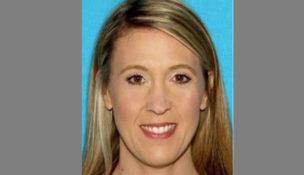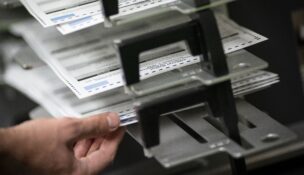Relitigating suppression motion precluded
By: David Ziemer, [email protected]//April 18, 2011//
Whether a court’s holding on a suppression motion precludes relitigation of the motion in a subsequent case is a question that has bedeviled Wisconsin courts for years.
Yet, the Court of Appeals’ opinions that do address the issue are invariably not published.
On April 14, once again, the Court of Appeals took up the issue, but issued a per curiam opinion – ineligible for publication and not even citable as persuasive authority.
Trinity J. Klasinski was charged in 2007 with felony operating while intoxicated. After a hearing on Klasinski’s motion to suppress, the circuit court held there was no probable cause to arrest, and dismissed the case without prejudice.
The State refiled the case in 2008; this time, the circuit court found there was probable cause to arrest, and denied the suppression motion.
Klasinski was convicted and appealed. The Court of Appeals reversed, holding that the doctrine of issue preclusion barred relitigating the suppression motion.
It was not disputed that the parties and the issues were the same in both cases. However, the parties disputed whether application of issue preclusion would be “fundamentally unfair,” under the five-factor test put forth in Michelle T. v. Crozier, 173 Wis.2d 681, 495 N.W.2d 327.
The State argued that issue preclusion would be unfair because it had no opportunity to appeal the first ruling, but the court disagreed. The court acknowledged that dismissal is not the appropriate remedy when a defendant prevails on a suppression motion; only suppression of the evidence is required.
But the court found that the State could have appealed both the circuit court’s ruling on probable cause in the earlier case, and the circuit court’s choice of remedy.
The State also argued that a dismissal without prejudice does not have a preclusive effect. The court acknowledged that dismissal of a claim without prejudice does not bar refiling the same claim. But it found that when an issue is actually litigated and decided in one case, relitigation of that issue can be precluded in a subsequent one.
Finally, the State argued that its interest in preventing driving while intoxicated is so strong that issue preclusion would be contrary to public policy.
For support, it cited City of Sheboygan v. Nytsch, 2006 WI App 191, 296 Wis.2d 73, 722 N.W.2d 626. The court acknowledged language in Nytsch to this effect. However, the court found that was just one factor in its analysis, and the main holding of Nytsch is that issue preclusion did not apply, because the probable cause issue had not been actually litigated in the earlier proceeding.
The court concluded, “the State’s interest in convicting drunk drivers is not, by itself, a sufficient reason to allow the State to relitigate an issue it previously litigated and lost. … That argument, if considered sufficient by itself, would have the practical effect of creating a blanket ban on issue preclusion against the State in serious criminal cases. That would be inconsistent with the case-by-case analysis we are to apply.”
Accordingly, the court vacated Klasinski’s conviction, and remanded with instructions to suppress whatever evidence should be suppressed due to the lack of probable cause.
Analysis
Once again, this murky area of the law has been left just as unclear as if the case had never been decided.
The Wisconsin Supreme Court last addressed whether issue preclusion applies to suppression motions in 1970, when the court held that the doctrine does not apply. Jones v. State, 47 Wis.2d 642, 178 N.W.2d 42, 49-50 (1970).
The court’s opinion in Michelle T., however, significantly changed how courts apply the doctrine, and the two cases would be difficult to reconcile. Since Michelle T., no published opinion, save for Nytsch, has addressed the issue at all.
But, as the Court of Appeals noted, in Nytsch, the suppression issue was never actually litigated in the first case, so it offers no guidance to courts when a suppression motion actually is decided in the earlier case.
The issue continues to resurface, though, but invariably is decided in unpublished opinions.
In State v. Dantuma, No. 99-1215-CR (Wis.App., Mar. 23, 2000), the court held that issue preclusion applied against the state to preclude relitigation of a motion to suppress custodial statements that had been decided in a previous case.
In State v. Fellbaum, No. 03-1428 (Wis.App., Dec. 16, 2003), the facts were similar to those in the case at bar. Rather than ordering the evidence from the arrest suppressed in the earlier case, the circuit court dismissed the case without prejudice. Because of this procedural irregularity, the Court of Appeals held the doctrine did not preclude relitigation of the motion in the second case.
In State v. Wasserman, No. 2007AP1441-CR (Wis.App., Aug. 26, 2008), the court held that the doctrine did not apply, even though the suppression motion had been fully litigated in the earlier action, because the first action was dismissed without prejudice. The court concluded that a final judgment on the merits of the entire claim is a prerequisite to application of issue preclusion. However, that was a misapplication of the law. The lack of a final judgment is only one of the five Michelle T. factors – whether the party against whom issue preclusion is sought could have appealed. Although the opinion was recommended for publication, it was ordered not published, because of this misapplication of the law.
Finally, in State v. Beckwith, No. 2008AP937-CR (Wis.App., Sept. 25, 2008), the court held that issue preclusion barred relitigation of a suppression motion, even though the defendant, who lost the motion in the first case, had no opportunity to appeal the denial of the motion in the earlier case.
Dantuma, Fellbaum, and the case at bar all contain thoughtful discussion of issue preclusion, and how it applies in the context of suppression motions. But none may be cited either as precedent or for their persuasive value.
As a result, whenever the issue arises, attorneys and circuit courts will still be forced to reinvent the wheel, making the same arguments that have already been accepted in these three opinions, but forbidden from citing them.
What the Court Held
Case: State v. Klasinski, No. 2010AP854-CR
Issue: Does the doctrine of issue preclusion bar relitigation of a suppression motion?
Holding: Yes. Where the issue was fully litigated and decided in the earlier action, and the State could have appealed but did not, the State cannot relitigate the issue.
Attorneys: For Plaintiff: Sally L. Wellman, Madison; For Defendant: Lora B. Cerone, Madison.
David Ziemer can be reached at [email protected].
Legal News
- Lawsuit asks Wisconsin Supreme Court to strike down governor’s 400-year veto
- Wisconsin man pleads not guilty to neglect in disappearance of boy
- ACS Selects University of Wisconsin Law School’s Miriam Seifter for 2024 Ruth Bader Ginsburg Scholar Award
- People with disabilities sue in Wisconsin over lack of electronic absentee ballots
- Wisconsin Republicans ignore governor’s call to spend $125M to combat ‘forever chemicals’
- Steven Avery prosecutor Ken Kratz admits ‘mistakes were made’
- Colombian national extradited to Milwaukee faces International narcotics-trafficking conspiracy charge
- MPD: Milwaukee homicides down nearly 40 percent compared to last year
- EVERS: Republican lawmakers No-Show at special meeting to release statewide PFAS funding, stabilize healthcare access
- Wisconsin ICAC Task Force conference on Missing and Exploited Children highlights increase in sextortion cases
- More than 300 Wisconsin officers back in law enforcement after being fired or forced out
- Former Trump staffer who said to ‘fan the flame’ after 2020 loss hired to lead Wisconsin GOP
WLJ People
- Power 30 Personal Injury Attorneys – Russell Nicolet
- Power 30 Personal Injury Attorneys – Benjamin Nicolet
- Power 30 Personal Injury Attorneys – Dustin T. Woehl
- Power 30 Personal Injury Attorneys – Katherine Metzger
- Power 30 Personal Injury Attorneys – Joseph Ryan
- Power 30 Personal Injury Attorneys – James M. Ryan
- Power 30 Personal Injury Attorneys – Dana Wachs
- Power 30 Personal Injury Attorneys – Mark L. Thomsen
- Power 30 Personal Injury Attorneys – Matthew Lein
- Power 30 Personal Injury Attorneys – Jeffrey A. Pitman
- Power 30 Personal Injury Attorneys – William Pemberton
- Power 30 Personal Injury Attorneys – Howard S. Sicula











